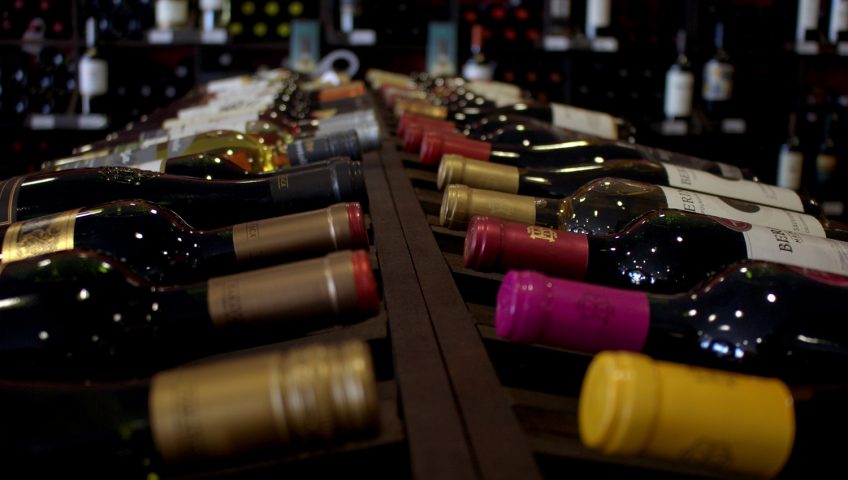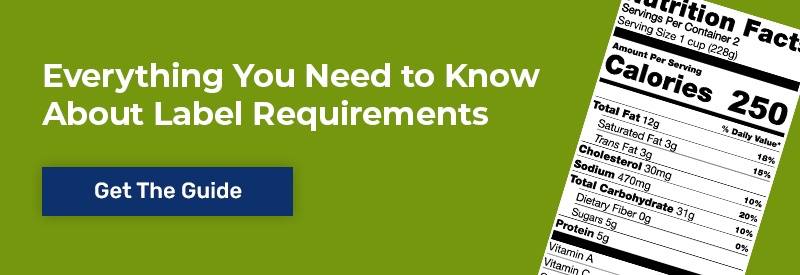
Guide to Wine Bottle Labels
Labels are important for wine buyers, because they usually tell customers the grape variety and growing region, which gives them some idea of how it will taste. However, there’s a lot more to wine labels than these descriptors.
There are strict requirements in the wine industry about how and when you can include information, including bottle size, alcohol content, appellation and more. This guide will walk you through the formatting needed to get your labels approved for use while still delivering the information your customers demand.
Who Handles Label Regulations for Wine Bottles?
Wine labeling regulations in America are handled by the Alcohol and Tobacco Tax and Trade Bureau (TTB.) The TTB requires wine makers to submit new wine label designs to check for regulatory compliance. If the label meets the agency’s requirements, you’ll get a Certificate of Label Approval (COLA) which means you can legally use your label design on retail products.
You do not need a new COLA if you update your wine bottle label templates to include updates to addresses, bar codes, date codes or trademarks. The TTB also allows for personalized wine bottle labels with holiday graphics, contest information or promotional stickers to be added and removed as needed, provided they do not interfere with the required information.
What’s Required to Get a COLA for my Labels?
You would be surprised by how few things are legally required on a wine label. That’s because the TTB is mostly concerned with providing information to judge the safety and general quality of the wine, not information that suggests flavor. Here’s what the agency requires on your labels.
Brand
This is the name of the winery. You can also add a brand name for the wine, but surprisingly, this isn’t required.
Country of Origin
This is where at least 75% of the fruit used to make the wine came from. If it’s a blend of foreign and domestic wine, the percentage of foreign wine must be listed on the label, i.e. “50 percent grape wine from Italy.”
Producer and Bottler
If your wine is produced in the U.S, you must state “bottled by” or “packed by” followed by the name and address of the bottler or packer. If your wine is produced outside the U.S, the label must also include the importer.
Net Contents
While some alcohol products have a “standard of fill” that uses customary sizes, all wine standards of fill are metric. Bottles that are 1, 1.5 and 3 liters in size must state their contents in liters. All containers between 3-18 liters must use whole liter size bottles, and state their size in liters. All other containers must state their contents in milliliters.
If you’re packaging sake, you are allowed to state container size for bottles over one liter in hundredths of a liter. For example, you would label a magnum bottle’s size as 1.50 liters.
Alcohol Content and Wine Type
Products labeled “red wine” or “white wine” must contain at least 14% alcohol, while products labeled “light wine,” “red table wine,” or “white table wine” are less than 14% alcohol.
Alcohol in wine is always stated as a percentage of alcohol by volume, not alcohol proof. This percentage is required for all wines containing over 14% alcohol. Wines with 7-14% alcohol don’t require this listing as long as they’re labeled “table wine” or “light wine.”
Sulfite Warning
This warning is required on wine that has 10 or more parts per million (ppm) of sulfur dioxide. This warning applies to wines that use sulfur dioxide directly or from a sulfiting agent.
Health Warning Statement
This is the statement required on all TTF-regulated alcoholic beverages, notifying buyers of possible birth defects and temporary mental impairment caused by alcohol consumption.
Requirements for Appellation of Origin and Other Optional Identifiers
Listing the region your wine is from is optional. However, there are strict regulations on how appellation can be displayed. Any suggestions of the terms below can only be used in the brand name, if they apply.
For example, Joe Wagner was forced to stop the sale of Willameter Journal. While this wine used grapes from Oregon, it was made in California, not in the Willamette Valley, as the name implies. Here’s how you can use optional terms on your wine label.
Appellation
The TTB enforces rules made by appellation organizations around the world. If you have wine produced in an American Viticultural Area (AVA,) 85% of the fruit used to make the wine must be from that region. California wines must use 100% California-sourced fruit to use appellations within the state, or to use the term “California wine.” Other countries and regions have similar regulations.
Vintage
To use a vintage date, at least 85% of the fruit must be from the same region and year. If the appellation of origin is an AVA, at least 95% of the fruit must be from that AVA.
Varietal Designations
If you’re using a grape-based identifier, the wine must contain at least 75% of that grape. For example, a Merlot must be 75% Merlot grapes. This also goes for type designations that require a specific grape variety, even if the name isn’t the same as the grapes. This is common for “old world” regional names that are closely tied to grape varieties.
If you’re using a designation based on a style of wine, and it’s not made in its traditional region, you must specify where it’s made in the designation. For example, a wine can be called a “Bordeaux” only if it’s made in the Bordeaux region of France. If you’re making a Bordeaux-style wine in California, you must call it a “California Bordeaux.”
Estate
To claim an estate, the grapes must be grown on land owned or controlled by the winery, and all of the grapes used must be crushed and fermented at the same location. The winery and vineyard must be in the same viticultural area.
Organic
Organic labeling falls under the USDA’s National Organic Program. Regulations are the same as other food products. Organic wines labeled as “100% organic” must contain 100% organic grapes, while other agricultural ingredients, including yeast, must also be organic. Other ingredients must be on the NOP’s National List.
Terms such as “made with organic grapes” can be used on products that contain less than 100% organic grapes, provided the label does not say “100%.” Organic wines cannot contain sulfites.
Adding Other Information for Consumers
Do you want to add tasting notes to your labels for wine enthusiasts? What about food pairing suggestions, or a little history of your winery? While this information isn’t required by the TTF, it is allowed.
This information can only be printed on the information panel (back label) and it can’t conflict with other required information on the bottle, or the Universal Product Code (UPC) required for checkout.
How Do I Get Custom Wine Labels Onto My Bottles?
No matter what design you decide to go with, our wine bottle labeler is perfect for the job. It uses a conveyor belt system designed to handle heavy, fragile glass bottles (which also works great with beer bottle labeling).
This machine supports both single wrap labels and front and back labels. It also supports cover labeling, so you can change existing labels or label sizes to meet different regulatory requirements. CTM’s wine bottle labeling stations can handle high speed labeling, and work with a range of standard bottle sizes and label formats to enable you to get far more bottles labeled than with a DIY hand labeler.
We Have the Equipment You Need for Your Wine
When you need a fast, accurate labeling solution that is gentle enough for your packaging, you need to talk to CTM Labeling Systems.
We specialize in high-quality label applicators to accurately apply your own labels. Contact us and we’ll get you in touch with a local distributor who will work directly with you to create a labeling system that streamlines your production system.





